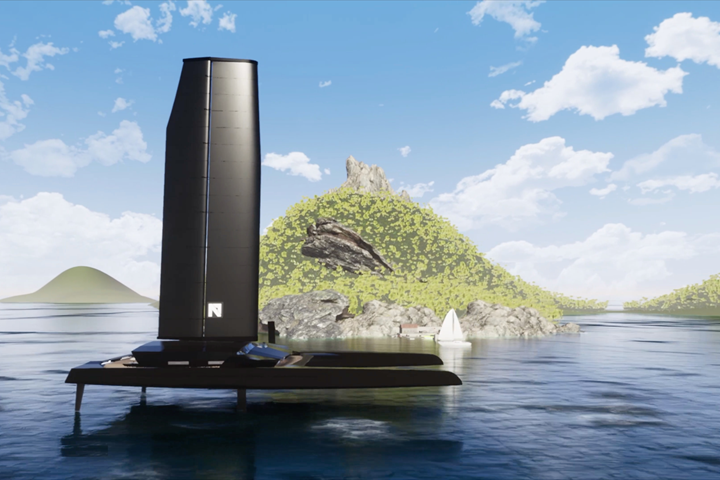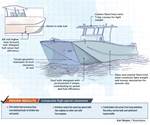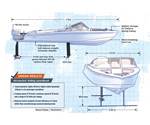Nemesis Yachts announces all-composite hydrofoil luxury yacht
Powered by a hydrogen-electric battery, solar panels and a wing sail, Nemesis One promises speed, comfort and sustainability.

Photo Credit: Nemesis
“Right off the start, we knew that the Nemesis One would not be comparable to traditional sailing yachts,” says Richard Ruthenberg, CEO of boatbuilder Nemesis Yachts (Dubai, United Arab Emirates). In August, Nemesis Yachts debuted the design of Nemesis One, its 332-foot-long (101 meters) carbon fiber composite hydrofoil catamaran.
Nemesis One, which the company claims will be the fastest luxury foiling yacht yet made, capable of speeds of more than 50 knots, is built both for speed and comfort. Designed by multihull experts VPLP Design (Paris, France), most structures for the Nemesis One will be built using carbon fiber prepreg; certain structures, such as the rotating mast, rudders and hydrofoils, will be constructed from solid carbon fiber composites, while others will be reinforced with Nomex honeycomb core as needed. The Nemesis One’s hull, built in three individual parts, requires a custom-built curing oven that measures 113 by 12 meters for curing. Gurit (Wattwil, Switzerland) has been named as a materials supplier for the yachts.
“Carbon fiber composites are the only viable choice for the Nemesis One’s hull and superstructures,” adds Ruthenberg, whose previous experiences include building infused composite structures for the wind and aerospace industries, “because we need the yacht to be as light as possible and able to withstand the tremendous forces when flying on water. All other construction materials used in marine applications are either too heavy or not strong/stiff enough for this task.”

Photo Credit: Nemesis Yachts
“I personally like the edgy and polygonal design a lot,” Ruthenberg says, “because it very much resembles a super sports car or stealth fighter jet. We wanted to create hull lines never seen before in a sailing yacht, that reflect the yacht’s performance.”
To maximize speed, the yacht incorporates an autonomous, computer-controlled Oceanwings wing sail developed by AYRO (Paris, France). The wing is said to automatically adjust the angle of attack, camber and twist, eliminating the need for manual sail trimming. Additionally, the reef and furlable wing sail is said to be 2.6 times more efficient than a conventional sail plan of equal size.
Without wind, Nemesis One is powered by a retractable hydrogen-electric propulsion system. In addition, up to 8,073 square feet (750 square meters) of solar panels onboard the yacht generate up to 150 kilowatts of power to recharge the yacht’s batteries.
Nemesis One will also come equipped with LiDar (laser radar) sensors to capture and monitor ocean and other environmental conditions. The data will be translated into control commands for the automated hydrofoils and rudders. The interior layout is also said to be easily configurable.
Manufacturing and engineering for the Nemesis One are still being finalized, and build and launch of the first yacht are likely still a couple of years out, Ruthenberg says. In the meantime, he says the company is also working on two smaller versions of the yacht: a 200-foot (60-meter) Nemesis ZeroSIX and a 101-foot (30-meter) Nemesis ZeroThree.
Related Content
-
Syensqo becomes new Solvay specialty materials company
Syensqo represents what was Solvay Composite Materials, focused on delivering disruptive material technologies and supporting growing customer needs.
-
Recycling end-of-life composite parts: New methods, markets
From infrastructure solutions to consumer products, Polish recycler Anmet and Netherlands-based researchers are developing new methods for repurposing wind turbine blades and other composite parts.
-
Paris Air Show 2023 highlights
The Paris Air Show, one of the largest aerospace trade shows in the world, returned for the first time since 2019 and proved that the global aviation industry industry is very much alive and kicking.

.jpg;width=70;height=70;mode=crop)













